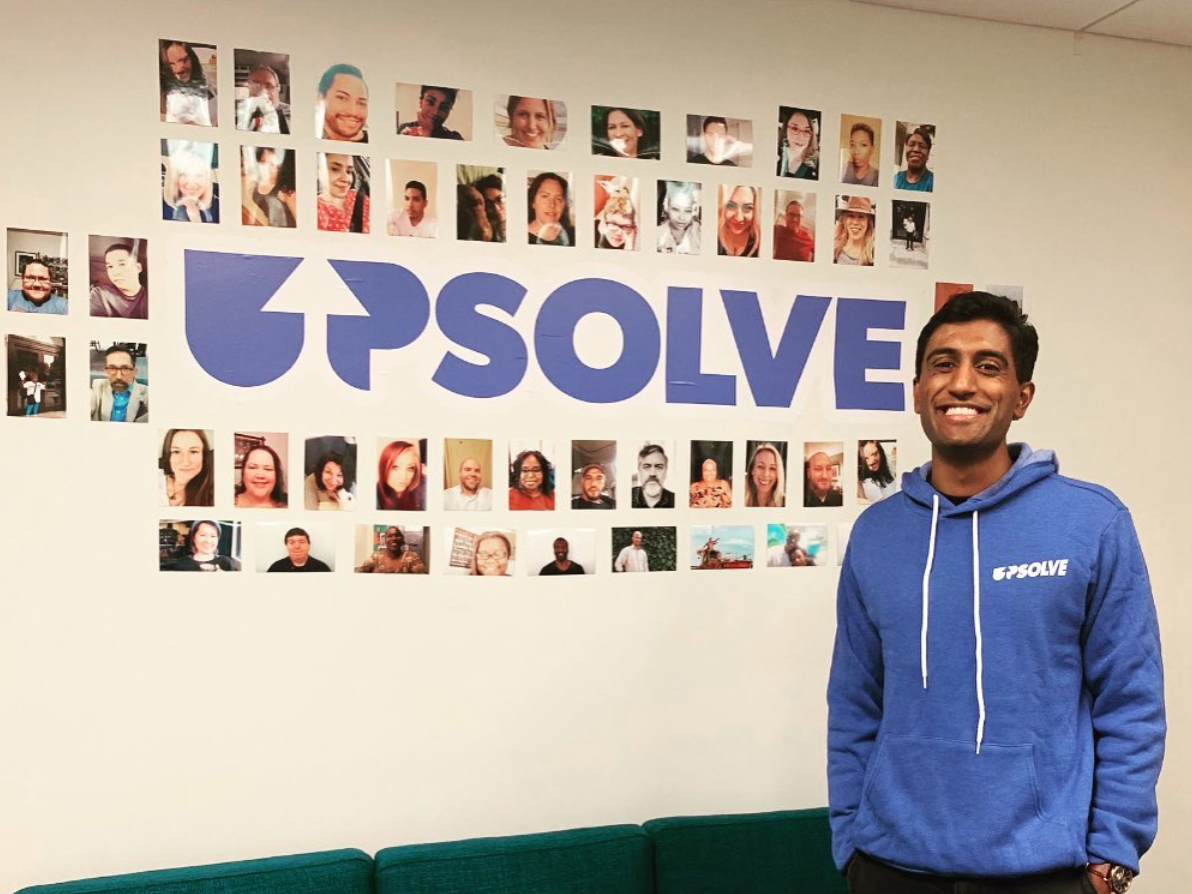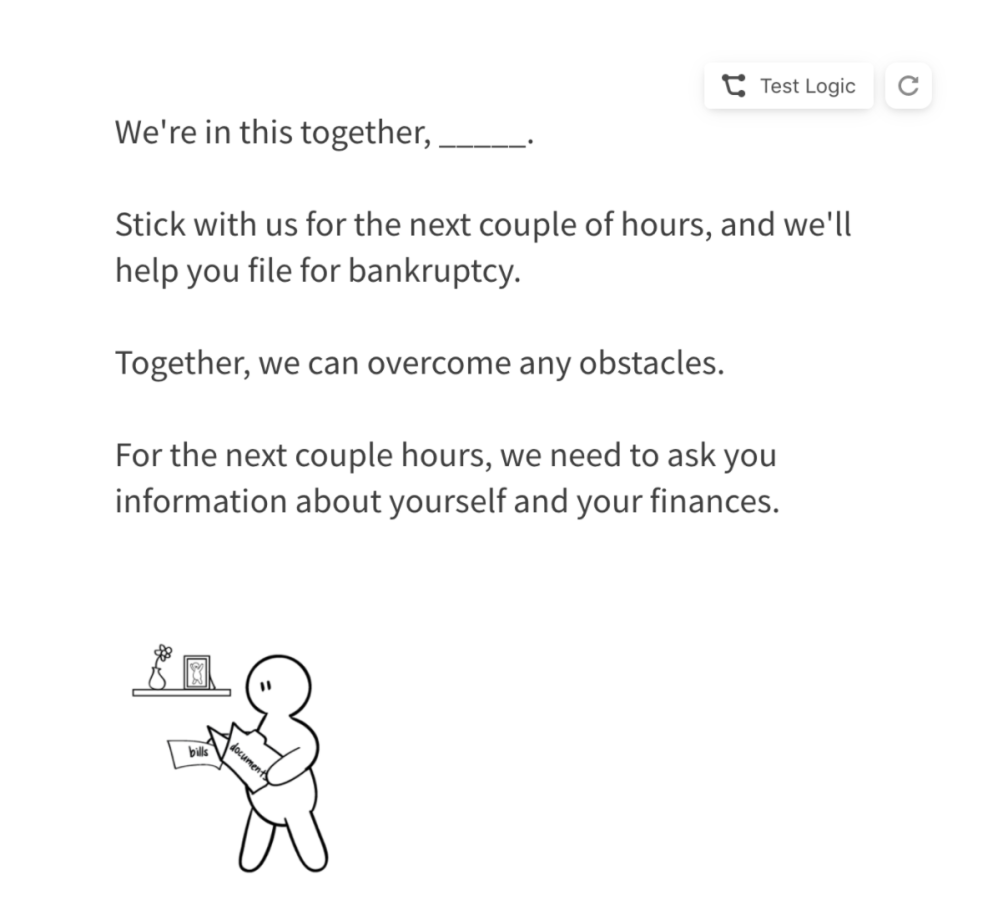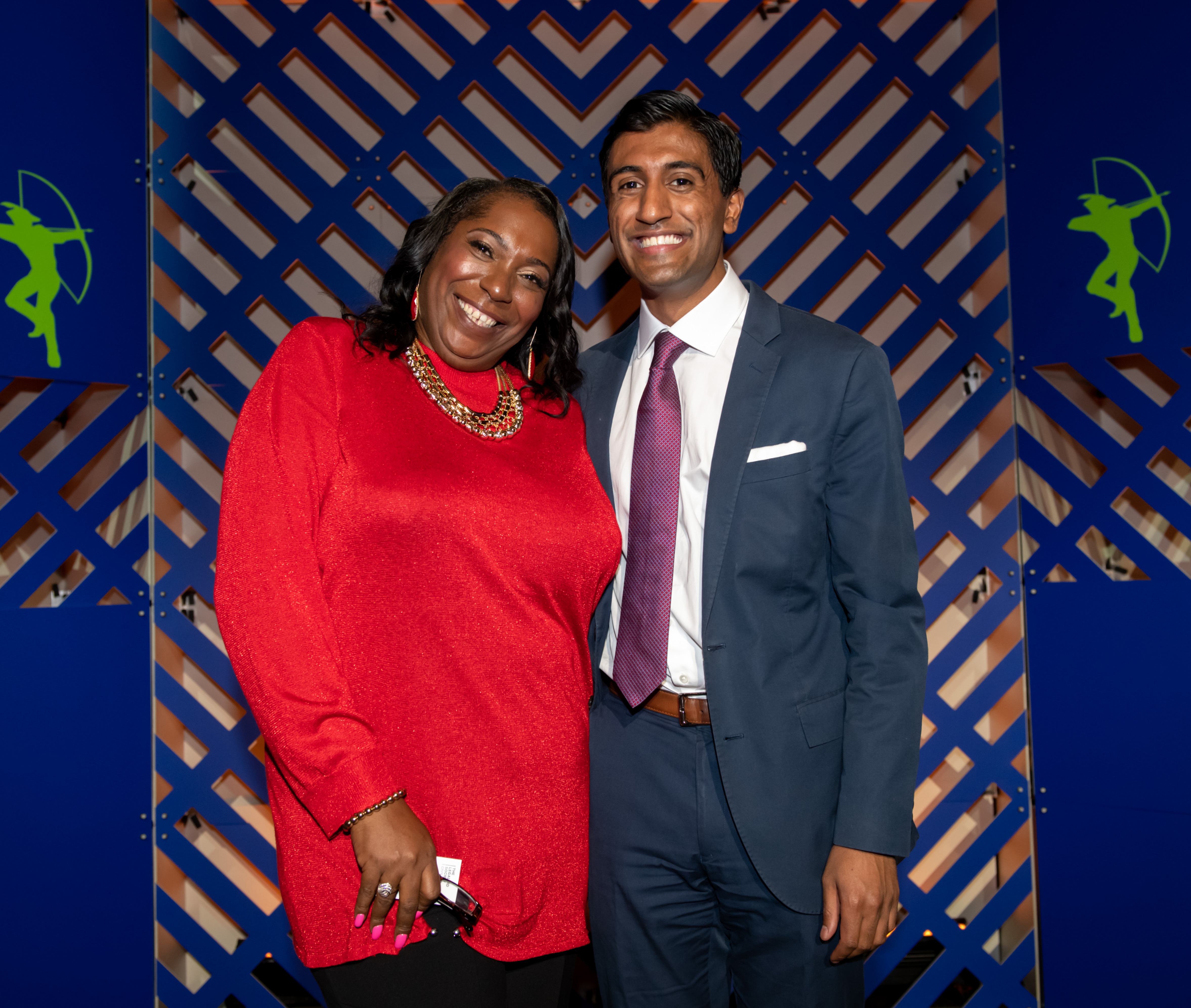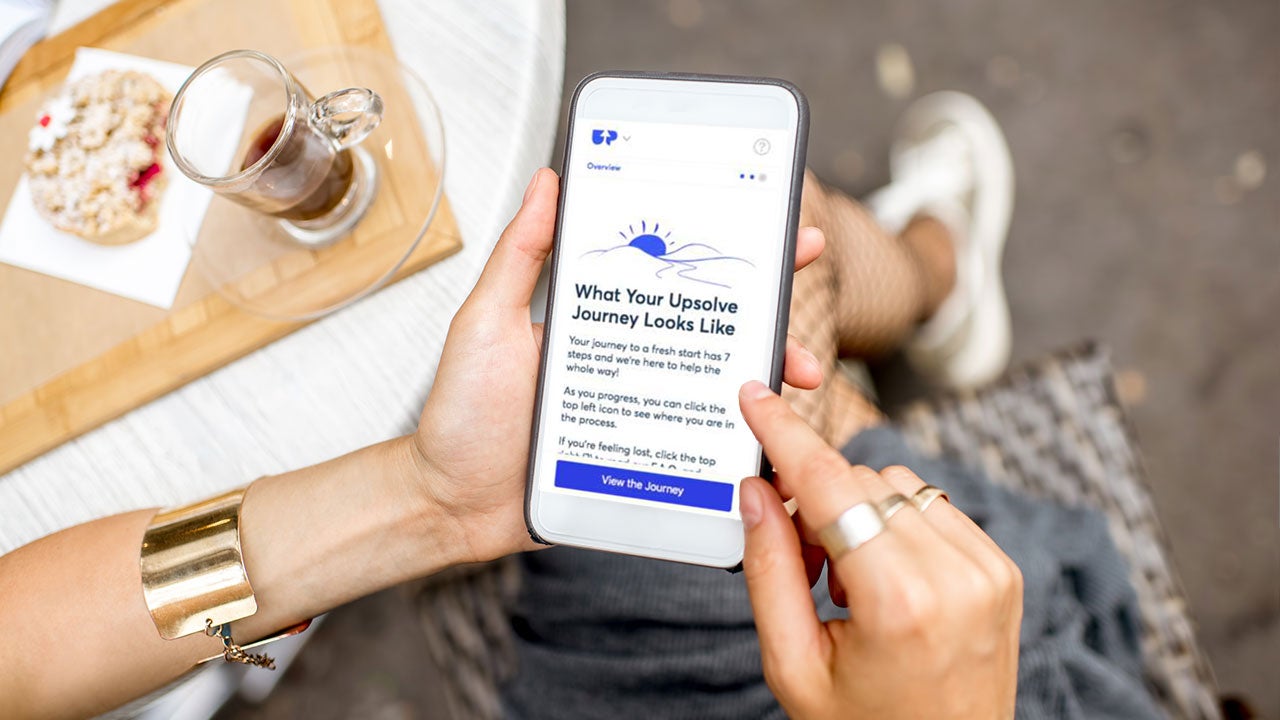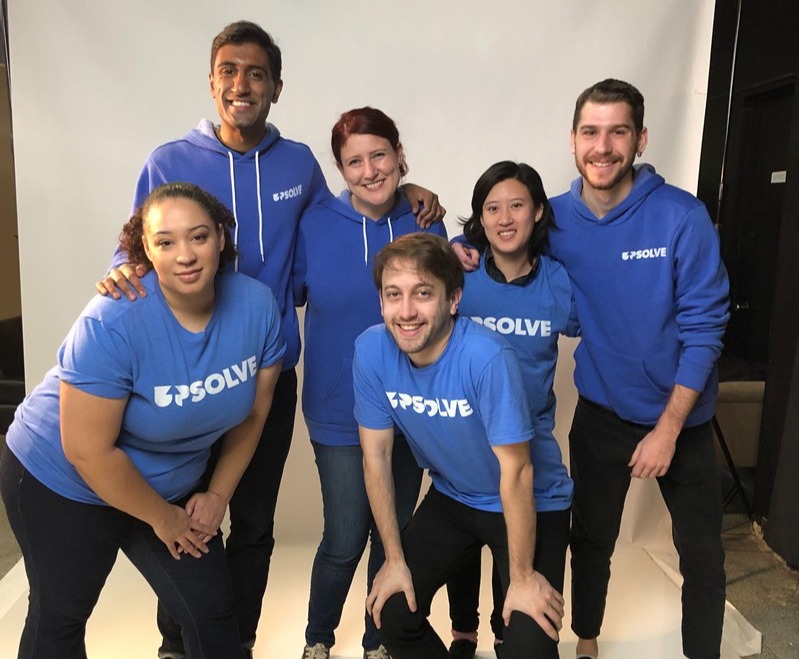Customer
Upsolve: Evening the odds in an unfair game
How an 800-question typeform turned into a non-profit platform that relieved over $250 million in debt for families struggling in America.

Alisa Pratt was walking a mile to and from her job cleaning hotel rooms just so that she could save on the bus fare. As she recalls, “every penny I earned went to my debt, but I couldn’t dig myself out. I knew I needed help.” Alisa is not alone. Many low-income families struggle, trying to make ends meet. As a result, lives, careers, and dreams for a better future are put on hold.
For these people, bankruptcy is an option that provides much more than relief from debt. But the decision to file Chapter 7 bankruptcy is not an easy one and it’s often delayed due to the stigma and myths related to it. The costs associated with filing are also steep.
Alisa Pratt initially spoke to a lawyer, but quickly realized that she—like so many—simply could not afford to pay an attorney. So, why’s the system in place making things harder for people who already have it rough? And how can it be remedied so that everyone has a fighting chance?
Paving the way to a free fresh start
In 2016, Rohan Pavuluri, a research assistant at Harvard Law School, and Jonathan Petts, a former corporate attorney, saw that personal bankruptcy attorneys were charging $2,000. As a result, millions of low-income families were priced out of their right to a fresh start. Rohan and Jonathan saw this as an opportunity to create an online application to allow people who couldn’t afford lawyers to file for bankruptcy on their own for free.
From this vision, they created the non-profit Upsolve. But before Upsolve could evolve into the tool that would help thousands of Americans generate their Chapter 7 bankruptcy forms for free, Rohan and Jonathan needed to test out their hypothesis.
The 800-question prototype
Filing for bankruptcy can require people trapped in debt to fill out up to 23 different forms. Rohan and Jonathan wanted to reduce the headache and human error that inevitably arises as drowning individuals wade through a sea of papers. They also realized a need in the community, and having envisioned the solution meant testing out minimum viable solutions quickly on a low budget.
Rohan and Jonathan needed a tool that would allow them to easily collect information from their clients so that they could help make sure all of their clients’ information was correctly supplied. Beyond collecting information, they needed a tool that was dynamic enough to keep their users engaged through the numerous questions required to populate the forms.
Their MVP solution: an 800-question-long (you read that right) typeform. It was their first product and guided their future development. Fortunately, people filing didn' t need to complete all of the 800 questions. Unfortunately, they still needed to fill out about 200 of these. To keep the questions unified and relevant, Rohan and Jonathan set up clever branching logic. These logic jumps were used to direct people to only those questions which were needed in order to complete their particular case. It looked like this:
The 200 questions individuals were guided through provided all of the information required by the bankruptcy forms. Rohan and Jonathan would then take these responses and manually (you read that right) populate the forms that the user needed to file with the court.
After hours watching people complete the long typeform, Rohan and Jonathan found hundreds of ways to improve the quality of the data they collected from users. They were able to learn what worked, what didn’t and quickly made changes to the prototype.
Some of the initial improvements made were on how they asked the questions and in making additional iterations to the logic jumps between the questions. They even experimented with different cartoons and motivational questions to keep the survey flow interesting for users. For users engaging with the form, it looked like this:
After an entire year experimenting with the MVP prototype, Upsolve raised an initial $300,000 from donors and Rohan and Jonathan began building a team. This initial funding also allowed Rohan and Jonathan to build out their vision and show the world that this type of self-service tool could work.
Alisa Pratt, the determined woman who walked that mile to and from her job, was actually one of Upsolve’s early users. In her words, bankruptcy “cleared the path” for her. She was able to get a fresh start, and is now serving her community in a variety of roles in the nonprofit sector. She has also been recognized for her work as one of Robin Hood’s 2019 Heroes.
Here are just a few other people Upsolve has been able to help:
A startup with a purpose
Since Upsolve’s humble beginnings as an 800-question typeform, Rohan and Jonathan have grown their software platform and created a platform to empower those in need to easily and effectively file for bankruptcy. They took what they learned from the typeform MVP to build a software product capable of handling the increase in demand Upsolve was receiving from individuals suffering from medical bills, layoffs, and other unexpected financial shocks.
This new software now allows for a totally automated process that meets people’s needs in bankruptcy. Upsolve is currently also exploring opportunities to create a new product to help people navigate student loan debt. Again, they' ll test out these ideas through a typeform by building an MVP, and guiding users through the maze of options available in order to forgive and reduce student debt.
So far, Upslove has relieved over $250 million in debt for families struggling with medical bills, layoffs, and predatory loans. Upsolve has also gone on to receive funding from Y Combinator, Google’s ex-CEO Eric Schmidt, the Robin Hood Foundation, and the U.S. Government. Upsolve has also received accolades like the World Changing Idea of the Year Award in Social Justice from Fast Company in 2019. Today, Upsolve is one of the largest legal non-profits, helping people like Alisa get back on their feet.
